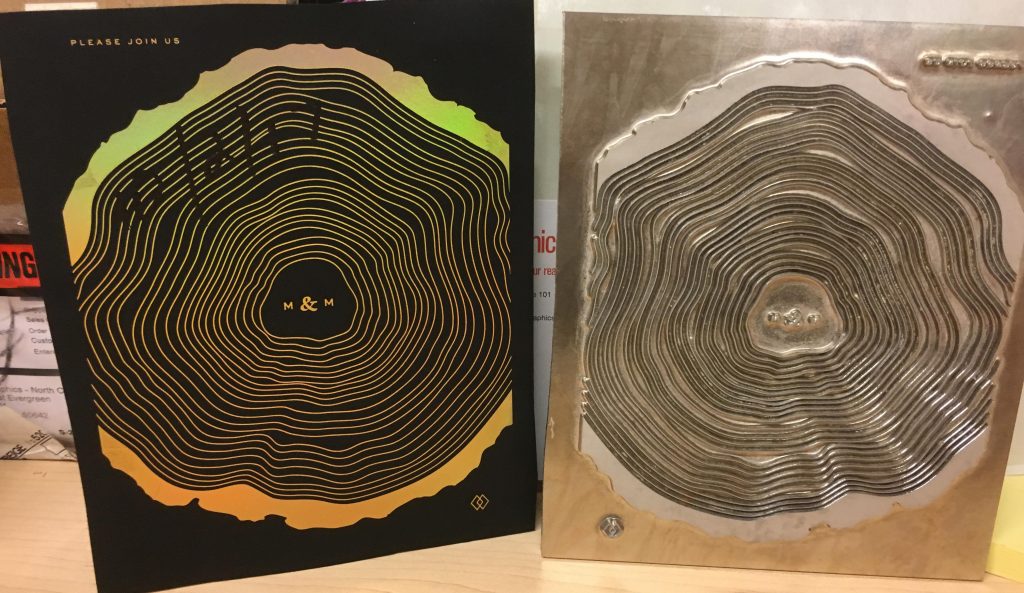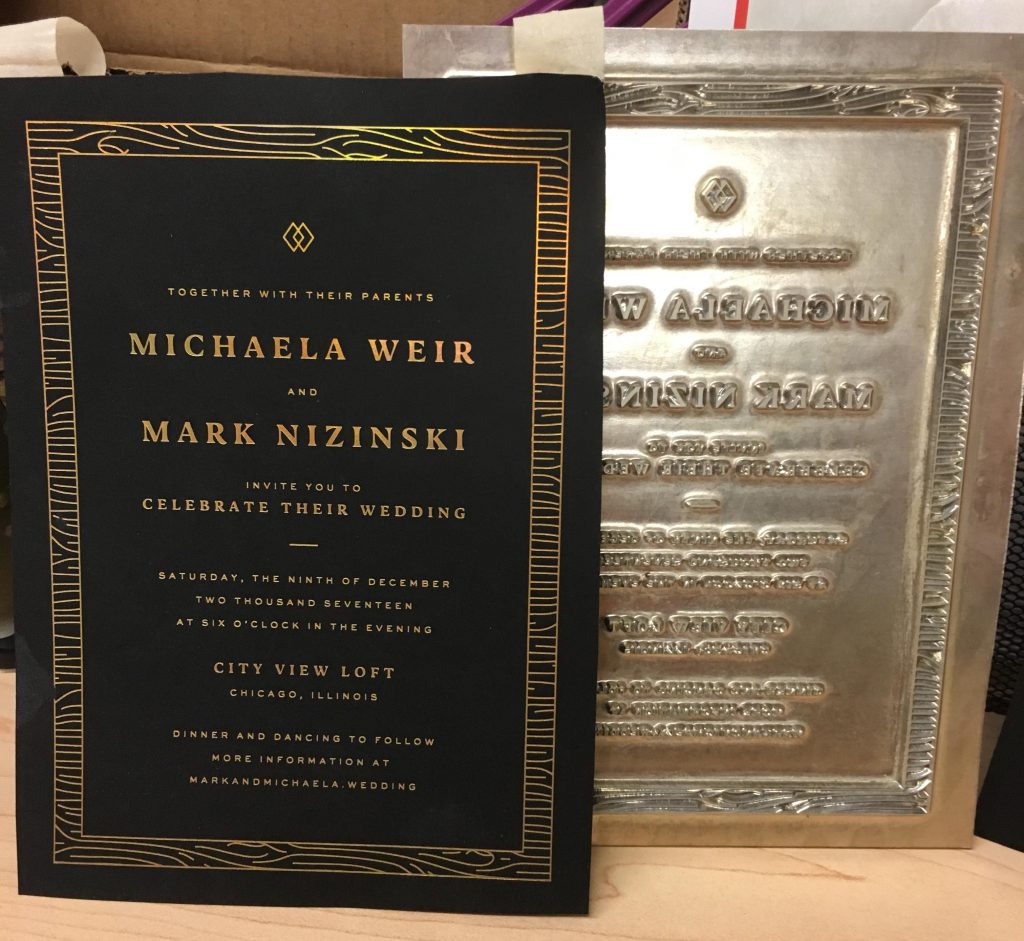Foil stamping is a printing process that uses a combination of pressure and heat along with metal dies and foil film. Foil films come in rolls and in a wide assortment of colors, finishes, and optical effects. Metallic foil is most commonly seen today – particularly gold foil, silver foil, copper foil, and holographic metallic foils – but foil rolls are also available in solid colors in both glossy and matte finishes. I use these for my clients looking for something unique like a
special invitation.
Foil stamping is somewhat similar to letterpress and engraving. The color is applied to paper with pressure. Once the design is finalized, metal dies are created in the appropriate shape for each individual color foil to be applied for a particular design. The dies are heated and then stamped with enough pressure to seal a thin layer of foil to the paper, and each color is applied individually through multiple runs of the press to create the final design. A final die may also be created if an embossed (raised) image or effect is desired for the design.

As with any printing process, foil stamping has pros and cons:
Foil is an opaque medium. Unlike thermography, lithography and letterpress, foil stamping does not use any ink. As a result, the foil color does not change based on the color of paper on which you are printing. This makes metallic or lighter color foil great for darker or colored papers. Foil can be used for a variety of finishes, including metallic, matte, glossy, pearlescent, holographic, and patterns such as marbling. There are also semi-transparent tint foils, if you do want to allow the paper color to show through.
Metallic foils have a shiny, lustrous finish with a big visual impact. With thermography, lithography, and letterpress, metallic’s can fall flat and aren’t very shiny. However, like letterpress, foil stamping is a labor-intensive printing method that requires multiple runs through the press to achieve multi-color designs. As a result, foil stamping can be expensive.

Creation of art files is VERY important when it comes to foil stamping:
The most important thing to know about creating artwork for foil is that it needs to be created in vector, not bitmap/raster. The reason for this is that the artwork is output on film at a resolution of more than 2k dots per inch. Generally, “high resolution” bitmap art is 300 dots per inch. This would result in a die with jagged edges, which will cause problems in foiling and make your final product look terrible. Vector art, on the other hand, doesn’t have a resolution as it is all mathematical lines and curves that can be expanded or reduced without affecting the resolution.
This means that artwork needs to be created in Illustrator or InDesign or another program that creates vector based output files. Here at
AlphaGraphics we need artwork sized to print and in pdf format, ideally set up with bleeds if applicable.
The second most important thing—which is actually just as important as the first—is that you can only use 100% values. You can’t make a gradient in a foil. You can’t do shading. You can only do black and white. No grays. Again, the reason for this is that the film output has only black and white. So grays are output as a dot pattern. This doesn’t make for a usable die. For this reason, die art needs to be created in a CMYK color space where black is 100% black, not 0 values of R, G and B.